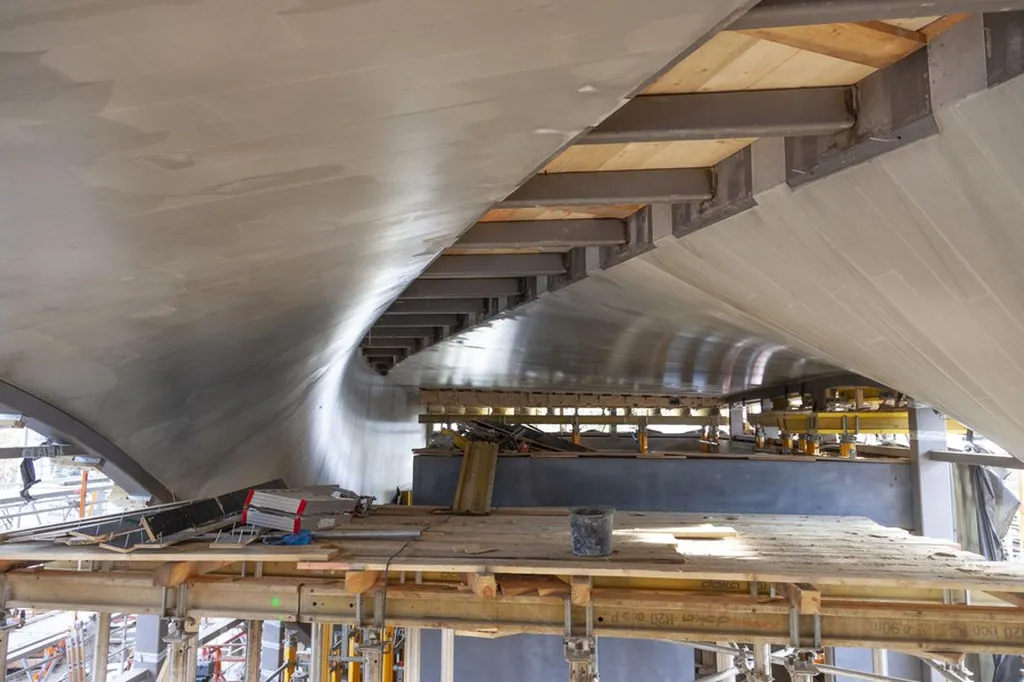In the heart of Germany, researchers at the Dresden University of Technology are pushing the boundaries of construction technology, aiming to revolutionize how we build and think about concrete structures. Leading the charge is Tobias Neef, a researcher at the Institute for Construction Materials, who, along with his team, is exploring the automated fabrication of single-curved carbon textile-reinforced concrete shells using extrusion-based printing. Their work, recently published in the journal ‘Developments in the Built Environment’ (translated to English as ‘Developments in the Built Environment’), could have significant implications for the energy sector and beyond.
Concrete shells have long been recognized for their efficiency in using materials, offering a more sustainable alternative to simple plates. By reinforcing these shells with lightweight, corrosion-resistant carbon textiles, the team is able to create extremely thin structures that require less concrete cover. However, the challenge lies in manufacturing these geometrically complex structures, a process that traditionally demands substantial manpower.
Neef and his team are tackling this challenge head-on by developing a reusable framework for the digital construction of these shells. Using a robotic arm, they generate precise printing paths, enabling the automated fabrication of thin-walled concrete shells. “This approach not only reduces the need for manual labor but also ensures a high degree of accuracy and consistency in the production process,” Neef explains.
To test the performance of these printed shells, the team conducted four-point bending tests using a linear variable differential transformer and a photogrammetric system. These tests allowed them to assess the shells’ deformations and crack patterns under load, providing valuable insights into their structural behavior.
The potential commercial impacts of this research are substantial, particularly for the energy sector. The ability to create thin, lightweight, and durable concrete structures could lead to more efficient and sustainable energy infrastructure. For instance, these shells could be used in the construction of wind turbine towers, reducing the amount of material required and lowering the overall cost of production.
Moreover, the digital fabrication process developed by Neef and his team could pave the way for more complex, material-efficient structures in the future. “Our work is just the beginning,” Neef says. “We believe that this technology has the potential to transform the way we build, making construction processes more efficient, sustainable, and adaptable to the needs of the energy sector.”
As the world grapples with the challenges of climate change and the need for sustainable energy solutions, research like this offers a glimmer of hope. By pushing the boundaries of construction technology, Neef and his team are not only advancing the field of concrete printing but also contributing to a more sustainable future. Their work serves as a testament to the power of innovation and the potential of digital fabrication to shape the built environment of tomorrow.

